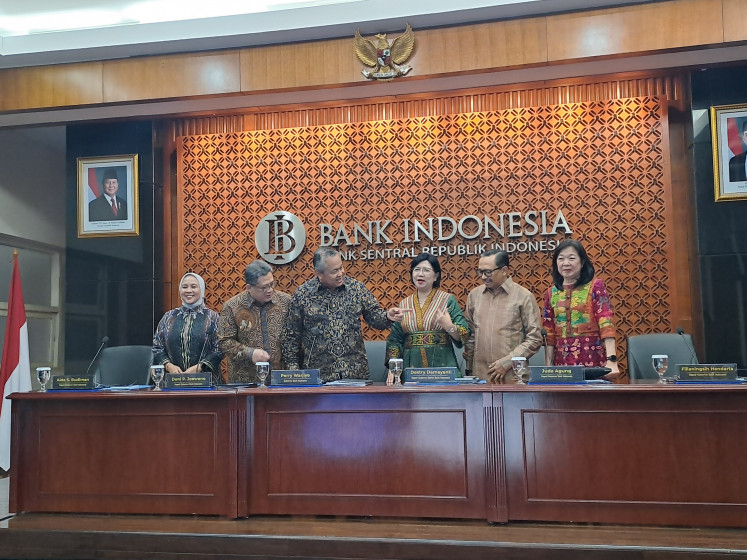Popular Reads
Top Results
Can't find what you're looking for?
View all search resultsPopular Reads
Top Results
Can't find what you're looking for?
View all search resultsRethinking RI's foreign policy concentric circle
Last week I had a discussion with a colleague, what emerged from our conversation was the issue of the concentric circle of our foreign policy
Change text size
Gift Premium Articles
to Anyone
L
ast week I had a discussion with a colleague, what emerged from our conversation was the issue of the concentric circle of our foreign policy.
The question really revolved on whether there has been a change in our concentric circle given the new fora that our foreign policy wishes to project in, namely the G20.
This is undoubtedly an important point to be aired in which it would guide the projection of Indonesia's foreign policy.
Foreign policy starts at home. The redefinition of Indonesia's foreign policy concentric circle begins with the bold concentration in which area the government wishes to signify, and surely, it should conform with the national strategic interests the administration aims to pursue.
In the early period of reformasi, as described by a prolific foreign affairs analyst Dewi Fortuna Anwar (2003), Indonesia's primary concentric circle emphasized on ASEAN countries, meanwhile the South Pacific, East Asia, and multilateral diplomacy made up the second, third and fourth circles.
This was not surprising knowing that then, under the administration of Megawati Soekarnoputri, the main mandate for FM Hassan Wirajuda was to restore Indonesia's regional status in ASEAN after being disrupted by the Asian Financial Crisis in 1998 and the negligence of the organization by President Wahid.
Additionally, Hassan Wirajuda's relative success story in image-building and regional initiatives served as a defining point of Dewi Fortuna's above mentioned description.
Similar to the projection of foreign policy where it starts from the national sphere Indonesia's effort to rebuild its international image starts from rebuilding itself in ASEAN, as a home for the country.
Time went on and the country needs to adapt with the rapid changes of threat perception, such as terrorism and climate change, and the appealing global opportunities at play in the G20.
Many have questioned what sort of role can we play therein, but on the other hand, I think the importance of defining the field we wish to play in at our concentric circle should not be neglected.
Sounds normative as it may, nevertheless, history has shown that we act based on the pragmatism of foreign policy That pragmatism is reflected in the focus circle of our foreign policy.
A colleague of mine whom I spoke with just recently reminded me that in the existing foreign policy concentric circle, ASEAN remains first, followed by Pacific countries like Australia, PNG, Timor Leste and New Zealand.
The East Asian economies such as Japan, China and South Korea are third. The difference I spotted here is in the past the term used was "East Asian countries", perceivably relations were weighted on political and regionalism aspects, today it is termed "economies" which I think emphasizes the necessity for Indonesia to put more efforts in economic diplomacy.
The fourth and fifth are thematic multilateral diplomacy (NAM and OIC) and lastly, the multilateral diplomacy in the UN. It states, nonetheless, nowhere here the multilateral economic diplomacy of the G20, as President Yudhoyono has specifically mandated FM Marty Natalegawa to focus on in the televised ministerial "audition" in Cikeas in October last year.
From this experience it seems that concentric circle only applies to foreign policy areas in which Indonesia is projecting on a regular basis. Although it is said that Indonesia's foreign relations are projected in accordance to the concentric circle, knowing the complexities of issues and varieties of challenges and the government's work plan that faced Indonesia's formal foreign policy actors, the circle should not be a rigid one. Otherwise stated, we might need to rethink the relevance of our concentric circle in the daily conduct of diplomacy.










